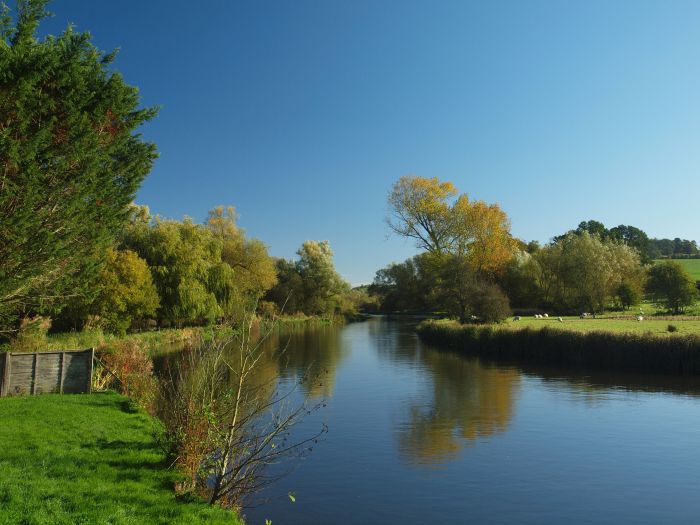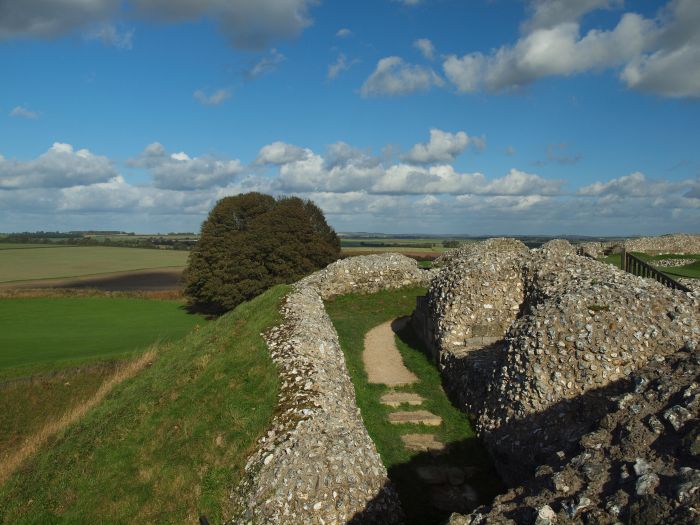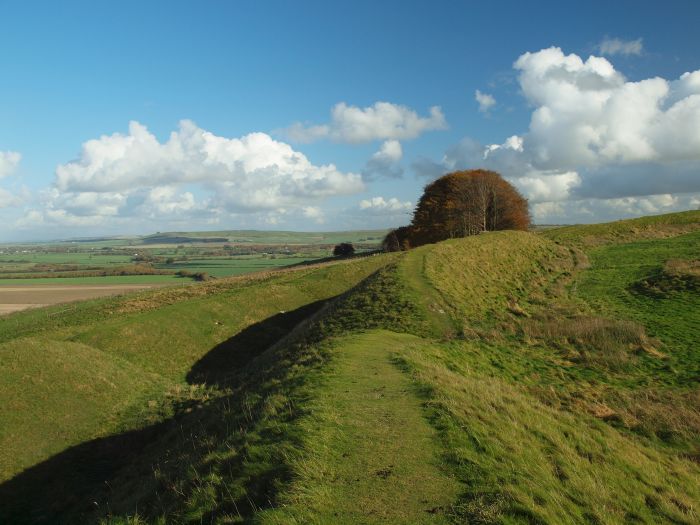Guidebook author Steve Davison leads the way along this brand new route meandering through the rolling Wiltshire Downs and taking in spectacular sights including Stonehenge and Salisbury Cathedral.
What is it?
The Great Stones Way is a new walking route developed by the Friends of The Ridgeway (www.ridgewayfriends.org.uk), a charitable organisation that has done much to help preserve the ancient trackways (some of which form the Ridgeway National Trail) that criss-cross the Wiltshire Downs. The route, which runs for 36 miles – although optional detours can increase the mileage to 53 miles – takes you on a journey through 5,000 years of history with lots to see along the way
Where is it?
In southern England, the official route starts at Barbury Castle just to the south of Swindon and meanders southwards to finish at Old Sarum just to the north of Salisbury. The alternative start at Coate Water and the extension to Salisbury gives easy access to rail services.
What’s the attraction?
Walking the Great Stones Way takes you on a journey through a landscape steeped in history, allowing you to discover the extraordinary sights our ancestors have left us. These include Iron Age hill forts with commanding views such as Barbury Castle and Old Sarum, while optional loops take you past the Neolithic henges and stone circles at the combined UNESCO World Heritage Site of Avebury and Stonehenge. There is also the option to finish the walk at Salisbury’s majestic medieval cathedral.
The first part of the trail heads south through the rolling open chalk downland landscape of the North Wessex Downs Area of Outstanding Natural Beauty, passing Avebury and then heading through the Vale of Pewsey to cross the Kennet and Avon Canal. The route then rises up to the edge of Salisbury Plain before heading along the River Avon valley with an optional visit to Stonehenge.
Along the way there are plenty of distractions, from picturesque towns and villages with thatched cottages and cosy pubs, to historic churches and interesting museums. And don’t think you have to walk the trail in one go – it’s ideal for day trips giving more time to explore the sites. However long you take, you’re sure to enjoy your journey.

Did it live up to its appeal?
Without a doubt… From the magical prehistoric sites to the sweeping views and from picturesque villages to tranquil riverside scenes, the Great Stones Way was definitely worth walking and leaves a lasting impression.
After leaving Barbury Castle the route heads south through the Marlborough Downs that are home to the sarsen stones (remnants of hard-wearing sandstone that were used by our Neolithic ancestors); a short detour to Fyfield Down National Nature Reserves rewards with a view across a sarsen-strewn landscape.
At Avebury, after admiring the henge and stone circle, the route passes near Silbury Hill – the largest man-made prehistoric mound in Europe – before making a quick visit to West Kennet Long Barrow. Then it’s off uphill crossing the Wansdyke to reach Walkers Hill. From here there is a wonderful sweeping panorama across the Vale of Pewsey.
The roller-coaster ride continues, dropping down to cross the Kennet and Avon Canal, once an important trade route between Bristol and the River Thames at Reading before the arrival of the much faster railways, to reach the Iron Age hill fort of Casterley Camp on the edge of Salisbury Plain. The plain, a large expanse of chalk grassland, has been used for military training since 1898 and you’ll most likely hear gunfire and see helicopters flying overhead.
You then meander through the peaceful surroundings of the River Avon, passing through picturesque villages such as Enford, Netheravon and Great Durnford. An optional detour leads past Durrington Walls. Recent excavations at this former henge have unearthed the remains of hundreds of houses built over 4,000 years ago, making it quite possibly the largest Neolithic settlement in northern Europe.

Next it’s Stonehenge. After pondering why, and how, this truly impressive structure was built, continue southwards to the Iron Age hill fort at Old Sarum, crowned by the ruins of a Norman castle; this was also the site of the original cathedral. A short walk from here brings you to Salisbury with its magnificent early 13th-century cathedral, overlooked by impressive buildings including Mompesson House and Arundells, once the home of former Prime Minister Sir Edward Heath; it’s quite easy to spend a day exploring this historic city.
As expected in the well populated south of England there are bound to be a few low points, and they come in the form of some busy road crossings. But these are just fleeting moments along an otherwise great route, and easily forgotten.
Remember it’s not a race – take time to enjoy your journey along the Great Stones Way. Let your mind wander and imagine what it must have been like when our prehistoric ancestors built these iconic structures.

How about the logistics?
The route follows well-defined rights-of-way and although only parts are currently waymarked with the Great Stones Way logo, the Friends of The Ridgeway plan to waymark the entire route.
The recently published Cicerone guide to the Great Stones Way (the only guidebook to the route) describes the main route and optional detours, and also provides plenty of useful information, including transport links and details on places to stay; the latter range from campsites and youth hostels to pubs with rooms and B&Bs, although most are just off the route.
Why should everyone else walk it?
To learn more about the fascinating sites our prehistoric ancestors left behind. To admire the views over the rolling chalk countryside, and to visit picturesque villages with historic churches and cosy pubs.

Fast facts
Trail length: 36 to 53 miles (58.5 to 85.7km) depending on route followed
Start point: Barbury Castle near Swindon (SU157760); alternative start at Coate Water (SU177827)
End point: Old Sarum near Salisbury (SU140326); alternative finish at Salisbury Cathedral (SU142296)
How many days does it take to walk? Between three and five, depending on which options your follow and how long you spend admiring the sights along the way
What should you pack? Normal walking gear. The route is fairly low level, but can be exposed at times to the prevailing weather.
When should you go? Any time, but walking conditions are best from spring to autumn.
What are the dangers? Not much different to a normal walk, but take care on road and rail crossings.
What are the highlights? Lots, including the remarkable historic sites, panoramic views, picturesque towns and villages.
Get the guidebook: The Great Stones Way by Steve Davison, published by Cicerone (www.cicerone.co.uk) – the only guidebook to the route. The route website is www.greatstonesway.org.uk.




